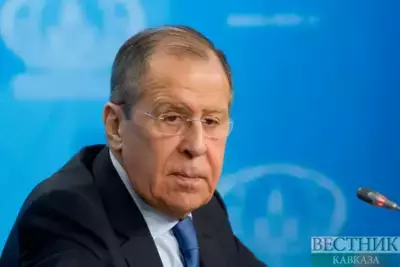On August 25, the Armenian media announced the arrival of two ethnic-Armenian families from Beirut, Lebanon, to the occupied territories of Azerbaijan (Asbarez, August 25). This was declared part of Yerevan’s assistance programs to Lebanon’s Armenian community. The wider initiative specifically includes a plan to resettle in Armenia and the occupied territories of Azerbaijan (namely, Karabakh) Lebanese-Armenians who suffered socio-economically as a result of the August 4 explosion at the Beirut port warehouses.
As The Jamestown Foundation writes in the article Armenian Resettlement From Lebanon to the Occupied Territories of Azerbaijan Endangers Peace Process, a day after last month’s catastrophic event in Beirut, “President” Arayik Harutyunyan, the leader of the local administration of the occupational forces in Karabakh, held a phone conversation with Aram I, the Catholicos of Cilicia, who heads the Armenian Apostolic Church based in Lebanon. Harutyunyan told Aram that Karabakh’s separatist authorities were ready to receive 100–150 families (Civilnet, August 5). Later, speaking at an August 25 meeting devoted to the assistance programs to Lebanese-Armenians, Harutyunyan declared that his administration would “welcome and provide housing to all […] compatriots who wish to move” to Karabakh (Asbarez, August 25).
According to Harutyunyan, Lebanese-Armenians are encouraged to resettle in their “homeland” by the provision of housing and other necessities. On September 10, the Armenian media disseminated a video of the settlement of the first Lebanese-Armenian family in Shusha, a historical Azerbaijani town in Karabakh (Twitter.com/aghavalyan, September 10). Local media further reported on plans to move 15 additional families in the near future (Arstakhpress.am, September 8).
The settlement of Armenians in the occupied territories outraged the Azerbaijani government and public, adding more fuel to the already-strained tensions between the two conflicting nations, enflamed by the border clashes in July (see EDM, July 14). Hikmet Hajiyev, the foreign policy advisor to the president of the Republic of Azerbaijan, stated that “Armenia aims to alter the demographic situation across Azerbaijan’s occupied territories by pursuing the illegal settlement policy.” Referring to international law, Hajiyev noted that the Geneva Convention of 1949 proscribes the transfer of the civilian population of the occupying state into the territory it occupies. “Ironically, such actions are considered a crime under Armenia’s own legislation. In Article 390 of Armenia’s Criminal Code, the occupying power’s deportation of the local population and transfer of its people to the occupied territories is a grave violation of international humanitarian law, punishable by 8–12 years of imprisonment,” Hajiyev told a local news outlet in Baku (Azertag, September 12).
It is not the first time that ethnic Armenians have been resettled in Karabakh and other occupied territories of Azerbaijan. In the wake of the outbreak of the Syrian civil war, more than 15,000 Armenians applied for asylum in Armenia, some of whom ended up in Karabakh (BBC, April 23, 2015). The new settlements have been promoted by Armenian leaders as an instrument to consolidate the control over the occupied region and generate a new demographic situation. This was officially adopted as a priority for 2017–2020 by Bako Sahakyan, Harutyunyan’s predecessor. Under his rule, funds ($800,000) from the budget of the local regime were allocated to populate and develop new settlements in the adjacent territories around Karabakh for the first time (President.nkr.am, October 16, 2017; Crisisgroup.org, December 20, 2019).
Thanks to satellite imagery provided by Azercosmos, Azerbaijan’s satellite operator, Baku has been able to track the expansion of new settlements in this region. One such image, shared by the Azerbaijani Ministry of Foreign Affairs on August 15, reveals the construction of a 15-house residential complex in Kalbajar, in the northwestern part of the occupied area (Report.az, August 15). The joint press release of the foreign ministry and Azercosmos warned that the growth of the number of homes there, from six in January 2020 to fifteen in August, shows that this settlement is likely to be further expanded. According to the shared information, similar residential complexes have been established in other parts of the occupied territories: the “Aracamux” residential complex in Jabrayil and “Ariavan” in Lachin region, as well as in Zangilan and the village of Khanlig in Gubadli region.
On September 14, Azerbaijan’s foreign ministry sent a letter of protest to the Minsk Group of the Organization for Security and Cooperation in Europe (OSCE), the international institution tasked with the mediation of the conflict between Armenia and Azerbaijan. “We call on the international community to take practical steps to hold accountable the Armenian government, which keeps the Azerbaijani territories under occupation and [is] carrying out illegal activities in these lands,” the Azerbaijani foreign ministry’s address declared (Mfa.gov.az, September 14).
Although the Minsk Group has yet to comment on Azerbaijan’s appeal, the international body’s previous fact-finding missions in the occupied territories, in 2005 and 2010, already reported evidence of new settlements. In 2005, the co-chairs of the Minsk Group warned against the potential repercussions of this process, underscoring that new housing construction creates a fait accompli for the future negotiations on the status of the region and, as such, seriously complicates the peace process (Europarl.europa.eu, accessed September 23, 2020). Azerbaijan laments that such international criticism is insufficient and fails to affect the process. This why, according to some local experts, Baku is presently considering other means to shake up the status quo in the conflict (Oxu.az, September 16).
















